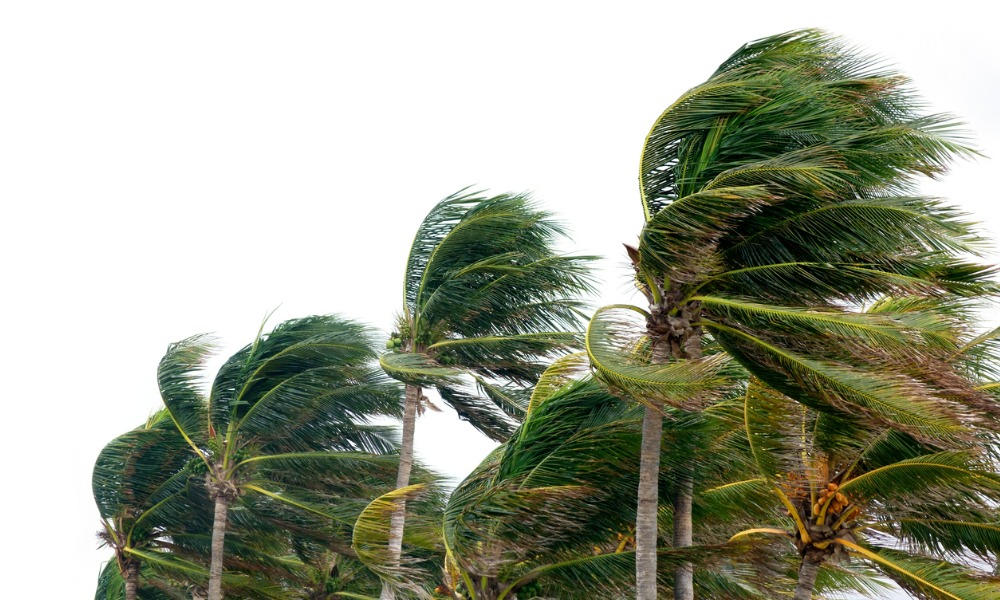
Sectors such as construction, agriculture and real estate should use ‘forward-looking diagnostics to mitigate risk'

Environmental catastrophes and natural disasters should be a concern for workers, especially after these incidents cost the global economy US$380 billion in 2023, according to a report from Aon.
That figure is 22% above the 21st century average.
Overall, there were 398 notable disaster events in 2023. And the 66-billion-dollar economic loss events last year is the highest on record, surpassing the annual average of 42.
The 2023 disasters also led to about 95,000 deaths, according to Aon.
"The findings of the report highlight the need for organizations – from insurers to highly impacted sectors such as construction, agriculture and real estate – to utilize forward-looking diagnostics to help analyze climate trends and mitigate the risk, as well as protecting their own workforces,” said Andy Marcell, CEO of Risk Capital and CEO of Reinsurance at Aon.
“Risk managers can take advantage of increasingly sophisticated tools and leverage analytics to unlock capital and make better decisions. Equally, the insurance industry plays a critical role in improving the financial resilience of communities within their portfolios and taking the opportunity to bridge the protection gap with new and relevant products."
Nearly six in 10 (59%) of Canadian SMBs were "directly impacted" by the unprecedented number of extreme weather events last year – ranging from rampaging wildfires, damaging storms, floods, and heat domes, according to KPMG. And 51% experienced a significant rise in their overall costs, while 44% cited a direct loss in revenue.
The following natural disasters in 2023 were the most costly to the global economy, according to Aon’s report titled 2024 Climate and Catastrophe Insight:
|
Date |
Natural Disaster |
Deaths |
Economic Loss (US$ Billion) |
|---|---|---|---|
|
02/06-02/20 |
Turkey and Syria Earthquakes |
59,272 |
92.4 |
|
05/22-09/30 |
China Floods |
370 |
32.2 |
|
10/25-10/26 |
Hurricane Otis in Mexico |
52 |
15.3 |
|
01/01-06/30 |
La Plata Basin Drought in Brazil, Argentina and Uruguay |
N/A |
15.3 |
|
01/01-12/31 |
U.S. Drought |
N/A |
14.0 |
|
05/13-05/17 |
Emilia-Romagna Floods in Italy |
15 |
9.8 |
|
03/01-03/03 |
Severe Convective Storm in the U.S. |
13 |
6.2 |
|
07/21-07/26 |
Severe Convective Storm in Europe |
11 |
5.8 |
|
08/08-08/17 |
Hawaii Wildfires |
100 |
5.5 |
|
03/31-04/01 |
Severe Convective Storm in the U.S. |
37 |
5.5 |
|
All other events |
~35,100 |
178.0 |
|
|
Total |
~95,000 |
380 |
|
"Amidst increasing volatility and complexity, there is a significant opportunity for organizations to become more resilient to the climate and catastrophe risks highlighted in our report," said Greg Case, CEO of Aon.
"By working across the private and public sector we are accelerating innovation, protecting underserved communities and better addressing the economic impacts of extreme weather to create more sustainable outcomes for businesses and communities around the world."
ESG is no longer optional for employers, according to a previous report.
Employers can do the following to support employees after a disaster, according to HR solutions provider Insperity:
“There’s no rulebook or set timeline for getting back to normal, or even a ‘new normal’. Everyone processes change differently,” said Insperity. “Check on your team’s well-being throughout the weeks following a disaster or disruptive event. You’ll likely be able to recognize when something is “not right” about them. Don’t take that lightly.”